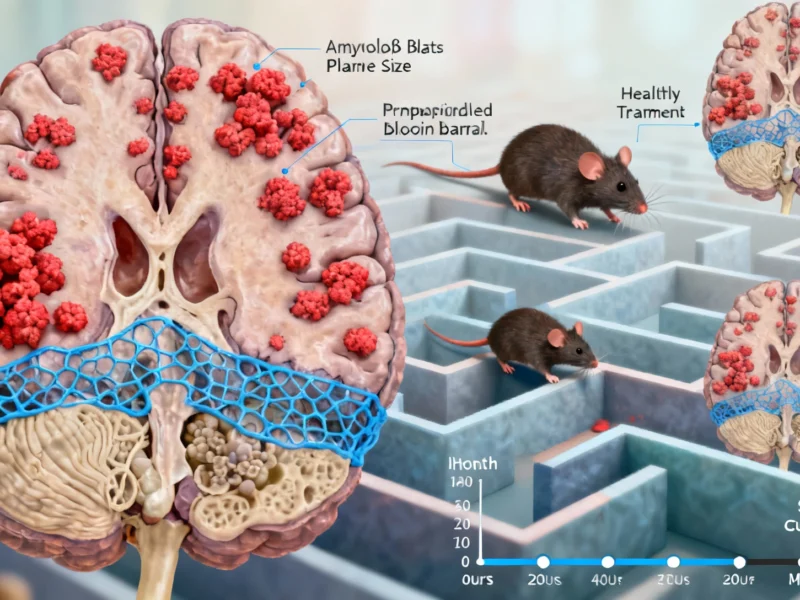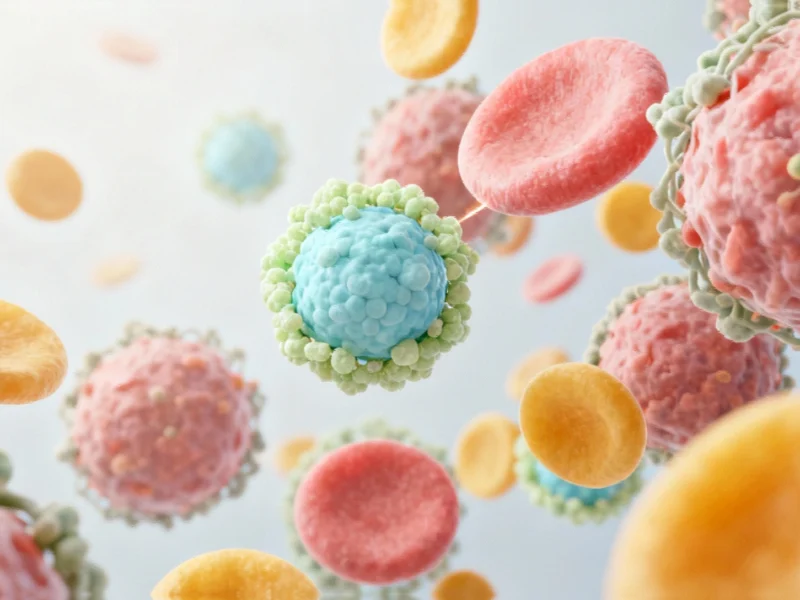Revolutionary Approach to Alzheimer’s Treatment
An international research team has reportedly developed a groundbreaking Alzheimer’s treatment that cleared brain plaques and restored memory function in mice within hours, according to a new study published in Signal Transduction and Targeted Therapy. The approach represents a fundamental shift in Alzheimer’s disease research by focusing on repairing the brain’s natural defense system rather than simply trying to bypass it.
Rapid Results in Animal Models
Sources indicate that after just three drug injections, mice genetically engineered to mimic Alzheimer’s disease showed dramatic improvements. Within hours of the first injection, researchers observed a nearly 45 percent reduction in clumps of amyloid-beta plaques, which are considered a hallmark of the disease. The report states that mice previously showing cognitive decline performed on par with healthy peers in spatial learning and memory tasks after receiving all three doses, with benefits lasting at least six months.
Repairing the Blood-Brain Barrier
According to the international team co-led by scientists at the Institute for Bioengineering of Catalonia and West China Hospital Sichuan University, their approach reframes the blood-brain barrier as “more than a hurdle to be leapt over, but a gate in need of repair.” Analysts suggest this represents a significant departure from conventional approaches that have focused on using nanoparticles as passive carriers or sound waves to temporarily open the barrier.
Nanoparticles as Active Agents of Change
The researchers explain they used nanoparticles not as passive medicine carriers but as “active agents of change” that alter traffic flow across the blood-brain barrier. Their target was ‘endothelial LRP1’, which helps remove amyloid-beta plaques. Bioengineer Giuseppe Battaglia from IBEC stated that “the long-term effect comes from restoring the brain’s vasculature,” creating a cascade effect where once the vasculature functions properly, it begins clearing harmful molecules and allows system recovery.
Broader Implications for Alzheimer’s Research
The findings come at a time when effective Alzheimer’s disease treatments remain elusive, with recent drugs producing mixed results. According to reports, some researchers believe the field has been too focused on clearing plaques and tangles inside the brain, while Alzheimer’s may actually start at the brain’s borders. The current study, available through this scientific publication, adds to growing evidence that repairing the blood-brain barrier itself could offer new treatment avenues.
Cautious Optimism from Research Community
While the preclinical results are described as “profound” by the research team, experts caution that success in mouse models doesn’t guarantee human effectiveness. Julia Dudley of Alzheimer’s Research UK, who was not involved in the study, noted that mice don’t have the same brain vasculature as humans and the research examined a specific dementia subtype in limited rodents. However, she acknowledged through the Science Media Centre that this research “could offer a new way to treat Alzheimer’s.”
Context in Broader Research Landscape
This breakthrough comes alongside other significant scientific developments, including environmental research on carbon dioxide levels and technological advances in computing. The Spanish research team has provided additional details in their native language publication, while the complete methodological approach is documented in Nature publications.
Future Research Directions
Researchers suggest their nanoparticle approach activates a feedback mechanism that brings clearance pathways back to normal levels, representing what they call a “new era” in drug research. As the scientific community continues to explore this promising avenue, the approach of treating the blood-brain barrier as dysfunctional tissue to repair rather than merely a barrier to cross may transform Alzheimer’s disease treatment strategies for years to come.
This article aggregates information from publicly available sources. All trademarks and copyrights belong to their respective owners.



